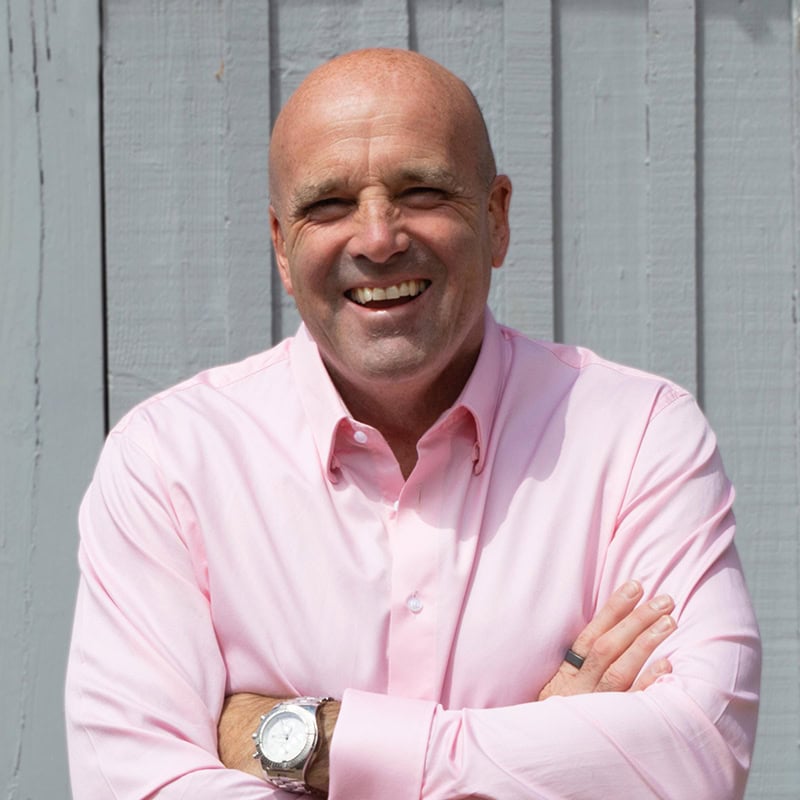Quick Summary
Most CEO advice is nonsense dressed as wisdom. Forget “fail fast” and “best practice”. Think clearly, kill bad ideas quickly, and build a business that actually works.
Takeaways
-
“Fail fast” means test smartly, not throw rubbish ideas at the wall.
-
Revenue doesn’t fix broken models—focus does.
-
You can’t scale if every decision goes through you.
-
Best practice is just average—aim to be exceptional at a few things, not mediocre at everything.
Over the past few decades, I’ve had the pleasure of working with dozens of founders and leadership teams, from Rackspace and Peer 1 to brilliant outfits like QCS, FX Digital, Smartsourcing and Unforgettable Travel Company. One thing unites even the best of them: sooner or later, they’ve been fed a load of bullshit masquerading as “conventional wisdom for CEOs”. And no, not by me before you say it.
Some of this advice sounds clever in a podcast. Most of it is dangerous in the real world. Here’s a run‑down of the worst snippets I’ve heard—and why you should chuck them straight in the bin (and add whoever gave them to you to your block list).
1. Fail fast
Now, I’m slightly conflicted by our first offender and will admit my issue with this is more about interpretation than the advice itself. I used to think this meant that it’s okay to excuse failure. Now I know it means learn and quit quickly if something isn’t working out.
Inside companies, though, teams often don’t try enough stuff. They pick one silver bullet, tattoo it on their forearm, and keep flogging it long after the dog’s died. “Fail fast” should mean run twenty experiments, shoot the losers, double down where the signal is strong.
What it doesn’t mean – and is frequently misinterpreted as – is throw a load of shit at a bedsheet and see what sticks. Launch any mad idea that comes to mind to see if it works. Crap ideas still take time and energy to bring to fruition so you still need to be smart and selective when it comes to what you take to market or put into practice.
Jim Collins calls it bullets and cannonballs. That’s the game. Test with bullets, then fire the cannonball. Too many treat failure as a badge of honour rather than a sign to wise up. They sink six months and half the budget into an idea that isn’t landing, then mutter something about “iteration” while the business burns around them.
Failing fast is about cutting your losses and moving on with conviction. Not wallowing in mediocrity with a shrug and a post‑mortem.
2. Revenue solves all problems
Look, I love revenue. Who doesn’t? But revenue at all costs? Rubbish.
One of the biggest traps I see is founders diversifying too early. They’ve got core revenue that doesn’t cover their infrastructure costs, but instead of fixing that, they bolt on three or four tangential product lines. Then they can’t kill them, because people are emotionally attached. These things hang around like bad smells—everyone knows they should go, but no one’s brave enough to take out the bin.
We had this at QCS. Great care‑home compliance software. Then there was… dentistry. It kind of worked, sort of had revenue. But it dragged them off track. We finally convinced the founder, to bin it but it was like a scab he couldn’t stop picking. It kept rearing its head again and again. Marc Andreessen has a fantastic saying on this topic: “don’t play with dead snakes”. Once you’ve killed the snake, stop bringing it back in a shoebox.
How do I know it works? QCS eventually sold to a buyer that had zero interest in dentistry. They only wanted care homes. Focus wins.
3. Keep control
One CEO. One brain. One bottleneck.
Early on, your span of control might be 1 to 15, maybe 1 to 20 if there are two co‑founders. But if you want to grow further, you’ll need more smart people. To cross 30, you need leaders. To cross 100, you need a leadership team. Not a gang of department heads who need babysitting—a real team that takes weight off your shoulders.
Graham at Unforgettable Travel is a great example. A year ago, he was making 100% of the decisions. Now it’s maybe 50%—and he’s probably underestimating that. He’s gone from no leadership team to the first iteration of the team that will take the company to new heights. Not perfect, but real. They’ve got muscle now. The goal? Get Graham’s decision involvement down to two days a week so he can do the things only the founder can do: set an unreasonable vision, win category‑defining work, and build the machine.
4. Focus on growth and everything else will grow with you
This is good advice only if you like growing broke.
That’s why we use “profit per X” and Power of One. What’s your economic engine? What’s the metric that proves this scales without killing you? Growth for growth’s sake drags you into the wrong customer group. Then your cost‑to‑serve explodes, your NPS tanks and misery spreads throughout the business.
I’ve watched companies triple headcount in 12 months and wonder why delivery and culture fell apart. If your model isn’t built for size, throwing money at it won’t help. You’ll just break things faster.
5. Never work with friends
Oh, piss off. That’s lazy advice.
One of the companies I have loved working with the most in recent times is FX Digital. They have built an amazing business with friends. They are still hiring mates. They even have mates they still want to bring on board when they grow big enough to support it – an actual waiting list of friends they want to make colleagues. At Rackspace, a third of our new hires came via employee referrals—often friends. Some of the most loyal, productive, values‑aligned people come from folks you already trust.
The key? Keep the performance bar high. When I turned around IT Lab, we had to move on some of the founder’s friends. If you can’t have tough conversations, that’s the problem. Not hiring friends. Working with mates can be brilliant—as long as they know it’s performance first, sentiment second.
6. You need the biggest Total Addressable Market now
Your investors want a billion‑dollar market. Fine. But early on, you want the smallest winnable niche.
Pick one vertical. Nail it. Don’t launch to lawyers, dentists and accountants all at once with four people and a dream. That’s insanity. You’ll end up mediocre at everything, master of nothing, and broke by Christmas.
7. You need a proper business plan
Yes—but not the one you think.
What you don’t need: a 100‑page ring binder of fantasy projections. If you don’t have product/market fit yet, get working on finding it. Once you’ve got traction and 30–50 people, the One‑Page Strategic Plan is plenty to get you to £10m, £20m, £100m. You need a plan; you don’t need bureaucracy.
A good plan fits on a page. If you can’t explain it over lunch, it’s too complicated to work on Monday.
8. Pay yourself peanuts
Founders underpaying themselves while keeping B‑ and C‑players on payroll drives me up the wall. You’re working six days a week, nine hours a day, can’t take a holiday, and you’re personally subsidising mediocrity. Madness. You don’t need to take a king’s ransom, but you do need to take enough to live a sane life.
Also: your partner didn’t sign up for poverty. If you can’t take them on holiday once in a while, what are you even working for? Pay yourself a decent salary. Otherwise you’re stealing from your future self to carry passengers today.
9. Build a board early
If you haven’t taken investment—if there’s no legal duty to do so—don’t build a bloody board.
Most non-executive directors are useless to early‑stage firms. They cost time, money and E&O insurance. Instead, build an advisory board. Pick a single strategic challenge for the next 12–24 months. Find two or three people who’ve done that journey. Ask them to help. Buy lunch. Be nice. Reassess in a year.
Don’t recruit “some bloke who used to run a local widget factory”. Need digital marketing expertise? Get that. Culture? That. Travel industry at £100m? That. Laser focus, no admin. No equity, no Companies House, no ballast.
10. Hire great people and get out of their way
Half true, half dangerous.
Yes—hire exceptional people (top 10%, then 5%, then 1%). I want you personally hiring the first fifty. But don’t vanish. If you hire a senior leader and then barely speak to them for six months, of course you’ll be disappointed. You’ve abdicated, not delegated.
For the first six months with any senior hire, you need to be hands-on, giving them clear direction, instruction, expectations. You should be close enough to them for long enough that they’ll absorb your values, your vision, your ICP, your standards into their damned DNA.
By working with them closely, you’ll know very quickly if they can do the things you need them to do. If not, part ways quickly. Early failure is on you if you didn’t invest the time.
11. Follow best practice
“Best practice” is just… average. Councils love it. High‑performing firms don’t. It sounds cutting edge; it’s not. It’s the median. If you aim for average, don’t be surprised when you get it.
Pick three to five strategic pillars and be killer at those. Be comfortably mediocre at the rest. Customers remember what you’re world‑class at; they’ll forgive some rough edges elsewhere.
“Best practice” is usually just what every other average Joe in your industry is doing. Come on. You’re better than that.
12. Give your early hires awesome job titles so they feel important
CEO, COO, CFO, CRO, CMO… in a team of eight. What happens when you finally hire a grown‑up who can actually do the job and you need to put them in over your “Chief Whatever”? Tears, titles and needless turnover.
When I was running businesses, I called myself Managing Director. It felt more appropriate than CEO. Use “Head of…” titles until the role really is enterprise‑grade. Titles are free to hand out and painful to take back. Don’t box yourself in for the sake of LinkedIn theatre.
13. Stay close to the business by doing more
A bonus nonsense: the founder who stays hands‑on in their old function because “that’s my superpower”. You were brilliant at sales/engineering/marketing—that’s why you became CEO.
But CEO is what your job is NOW. If you cling to your comfort zone, you’ll become the bottleneck you complain about.
Hire someone exceptional into your old seat. Coach, set standards, inspect—then let go. Your calendar is a strategic asset; stop clogging it with yesterday’s work.
Here’s the stuff you should do instead
Being a CEO means thinking clearly, choosing wisely, and ignoring 90% of the guff you hear on LinkedIn. Build a business that works. Focus on one ICP, one problem, one product, one route to market. Hire the best people you can afford, then invest time in them so they carry your standards. Kill bad ideas fast and keep dead snakes dead. Pay yourself properly so you can enjoy the ride and make good decisions. And for the love of all that’s holy, stop collecting titles and “best practices” like fridge magnets.
You’ve got this. Just don’t take strategy lessons from muppets with microphones. Did I mention I have a podcast?
Written by business coach and leadership coaching expert Dominic Monkhouse. You can order your free copy of his new book, Mind Your F**king Business here.

